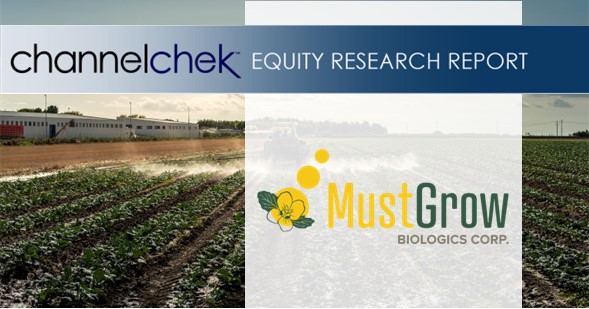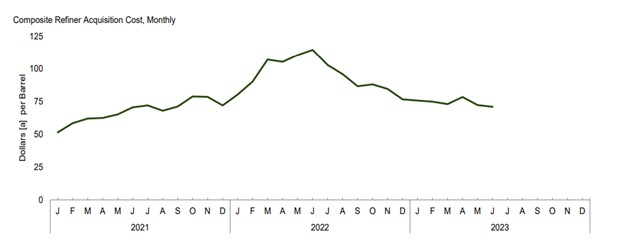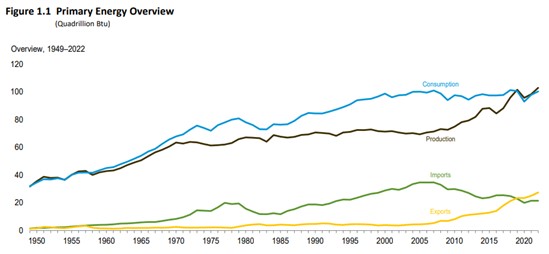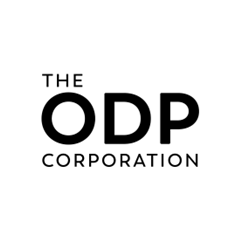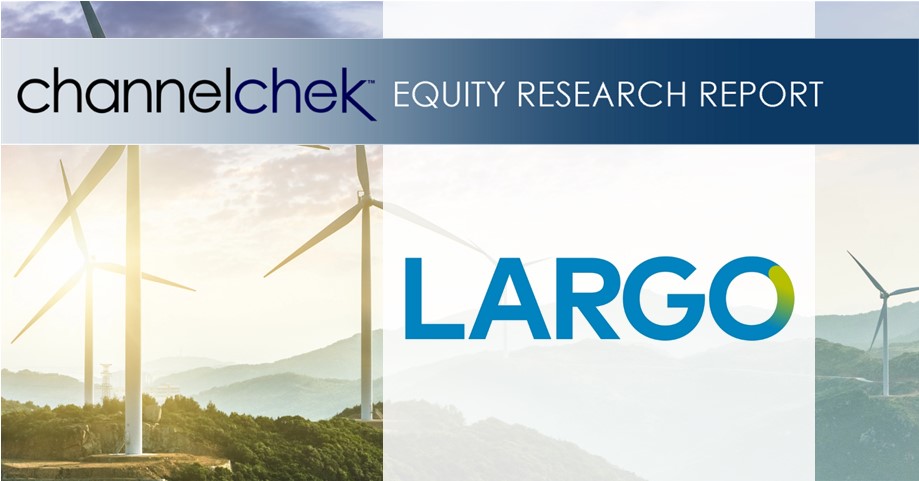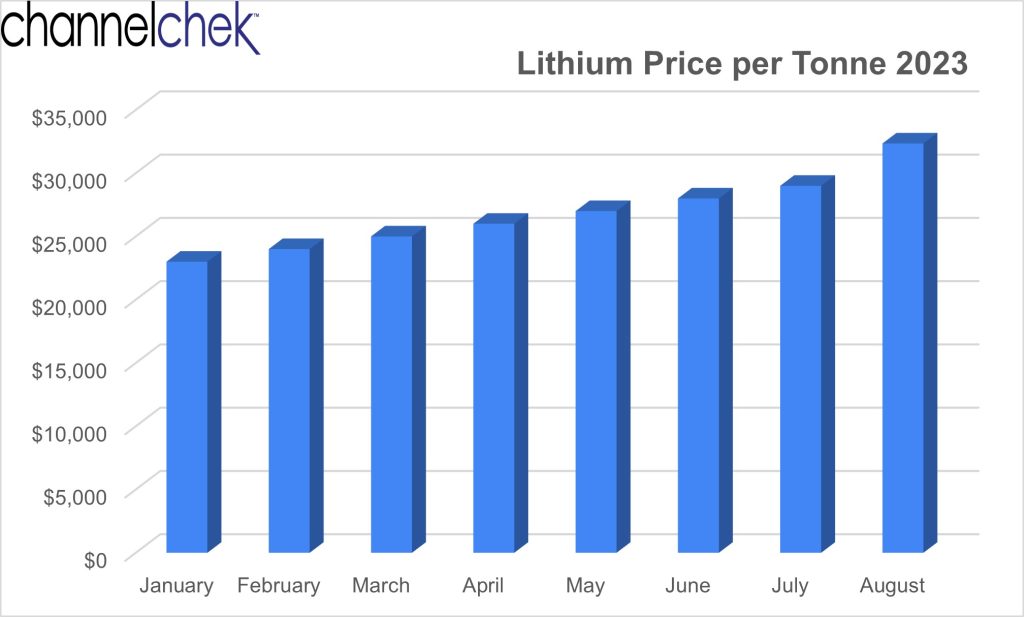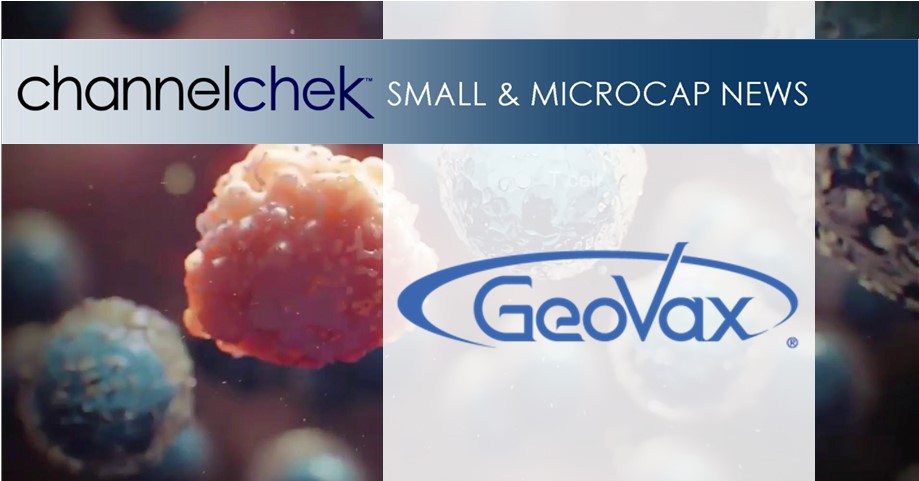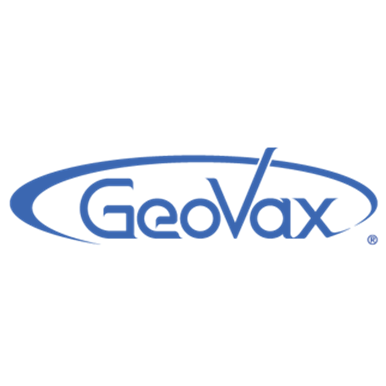
Research News and Market Data on FLWS
Aug 31, 2023
Reports Fiscal Year 2023 Revenue of $2.0 Billion and a Net Loss of $44.7 Million, which Net Loss Includes an After-Tax, Non-Cash Charge of $57.8 Million Associated with the Third Quarter Goodwill and Intangible Asset Impairment Charge
Fiscal Year 2023 Adjusted Net Income1 was $13.4 million, or $0.21 Per Share, Compared with Adjusted Net Income1 of $32.9 Million, or $0.50 Per Diluted Share, in the Prior Year Period
Generates Adjusted EBITDA1 of $91.2 Million During Fiscal Year 2023, as the Fourth Quarter Adjusted EBITDA Loss1 Improves by $10.2 Million to $6.6 Million
Reports Fiscal Year 2023 Free Cash Flow1 of $70.7 Million
Issues Fiscal Year 2024 Outlook
(1) Refer to “Definitions of Non-GAAP Financial Measures” and the tables attached at the end of this press release for reconciliation of non-GAAP results to applicable GAAP results.)
JERICHO, N.Y.–(BUSINESS WIRE)– 1-800-FLOWERS.COM, Inc. (NASDAQ: FLWS), a leading provider of gifts designed to help inspire customers to give more, connect more, and build more and better relationships, today reported results for its fiscal 2023 fourth quarter and full year ended July 2, 2023.
Fiscal 2023 Fourth Quarter Highlights
- Total consolidated revenues decreased 17.9% to $398.8 million, compared with total consolidated revenues of $485.9 million in the prior year period, which included a 53rd week. Excluding the impact of the 53rd week in the prior year period, revenues declined 14.8%.
- Gross profit margin increased 340 basis points to 37.1%, compared with 33.7% in the prior year period. This continues the trend of improving gross margin since the fiscal first quarter led by improvements across the Company’s three business segments, which benefited from lower ocean freight costs, the Company’s strategic pricing initiatives, and a decline in certain commodity costs.
- Operating expenses declined $18.7 million, or 9.8%, from $190.7 million in the prior year period to $172.0 million. On a percentage basis, operating expenses increased to 43.1% of sales, compared with 39.3% in the prior year period, primarily due to sales deleverage and the performance of our non-qualified deferred compensation plan, which was partially mitigated by marketing efficiencies.
- Net loss for the quarter was $22.5 million, or ($0.35) per share, compared with a net loss of $22.3 million, or ($0.34) per share, in the prior year period. Net loss and net loss per share in the current year period were impacted by the tax treatment of the impairment charge recorded during the fiscal third quarter. Adjusted net loss1 was $17.8 million, or ($0.28) per share, compared with an adjusted net loss1 of $21.8 million, or ($0.34) per share, in the prior year period.
- Adjusted EBITDA1 for the quarter was a loss of $6.6 million, improving $10.2 million, as compared with an adjusted EBITDA1 loss of $16.8 million in the prior year period.
Fiscal Year 2023 Highlights
- Total consolidated revenues decreased 8.6% to $2.02 billion, compared with total consolidated revenues of $2.21 billion in the prior year period, which included a 53rd week. Excluding the impact of the 53rd week in the prior year period, revenues declined 7.9%.
- Gross profit margin increased 30 basis points to 37.5%, compared with 37.2% in the prior year period. After declining 720 basis points during the fiscal first quarter on significantly increased costs for labor, shipping, and commodities, gross profit margin increased 90 basis points during the second quarter, 80 basis points during the third quarter, and 340 basis points during the fourth quarter, as compared with the prior year periods, benefiting from lower ocean freight costs combined with the Company’s strategic pricing initiatives.
- Operating expenses increased $12.9 million from the prior year period, including a $64.6 million non-cash goodwill and intangible assets impairment charge that was recorded during the fiscal third quarter. Excluding the impact of this charge, operating expenses declined $51.7 million or 6.6%, compared with the prior year period. Operating expenses as percent of sales, excluding the third quarter impairment charge noted above, increased 80 basis points to 36.1%, compared with 35.3% in the prior year period, primarily due to sales deleverage, which was partially mitigated by marketing efficiencies.
- Net loss for the fiscal year was $44.7 million, or ($0.69) per share, which includes an after-tax non-cash goodwill and intangible assets impairment charge of $57.8 million, or ($0.89) per share, compared with net income of $29.6 million, or $0.45 per diluted share, in the prior year period. Adjusted net income1 was $13.4 million, or $0.21 per share, compared with adjusted net income1 of $32.9 million, or $0.50 per diluted share, in the prior year period.
- Adjusted EBITDA1 for the fiscal year was $91.2 million, as compared with $99.0 million in the prior year period, reflecting the significant improvement in adjusted EBITDA of $14.9 million in the second, third and fourth quarters, collectively, after the $22.7 million decline in the first quarter.
- Generated Free Cash Flow1 of $70.7 million during fiscal 2023, an improvement of $131.9 million over the prior year.
Jim McCann, Chairman and Chief Executive Officer of 1-800-FLOWERS.COM, Inc., said “We successfully mitigated the impact of a softer sales environment during Fiscal 2023 through our expense optimization efforts coupled with the improvement in our gross margin. Simultaneously, we executed on our strategic initiatives to offer customers an expanding array of gift giving options across multiple price points, we invested in our technology platform to enhance the customer experience, and we expanded our product portfolio, both organically and through acquisitions, which positions us well as a premier gift giving destination once the broader consumer environment improves.”
McCann added, “As we look beyond the current horizon, we believe that the actions we have taken to enhance the customer experience, improve margins, and optimize expenses, combined with an improved consumer environment, will enable us to achieve our historical sales growth, gross profit margin and adjusted EBITDA margin rates.”
Segment Results
The Company provides Fiscal 2023 fourth quarter and full year selected financial results for its Gourmet Foods and Gift Baskets, Consumer Floral and Gifts, and BloomNet segments in the tables attached to this release and as follows:
- Gourmet Foods and Gift Baskets: Revenues for the quarter were $120.7 million, declining 18.7% compared with $148.4 million in the prior year period. Gross profit margin was 28.1%, compared with 23.2% percent in the prior year period. Segment contribution margin1 loss was $13.4 million, compared with segment contribution margin1 loss of $23.7 million in the prior year period. This primarily reflects the gross margin improvement combined with more efficient marketing spend.
For the full fiscal year, revenue in this segment decreased 3.9% to $965.2 million, compared with $1.0 billion in the prior year. Gross profit margin for the year was 34.9%, compared with 34.2% in the prior year. Segment contribution margin for the year, without the impairment charge, was $77.5 million, compared with $64.9 million in the prior year. - Consumer Floral & Gifts: Revenues for the quarter were $248.3 million, declining 17.0% compared with $299.0 million in the prior year period. Gross profit margin was 40.6%, compared with 38.0% percent in the prior year period. Segment contribution margin1 was $30.7 million, compared with segment contribution margin1 of $26.5 million in the prior year period. This primarily reflects gross profit margin improvement combined with marketing efficiencies that more than offset the revenue decline.
For the full fiscal year, revenues decreased 13.1% to $920.5 million, compared with $1.06 billion in the prior year. Gross profit margin was 39.5%, compared with 39.3% in the prior year. Segment contribution margin1 was $95.5 million, compared with $104.3 million in the prior year. - BloomNet: Revenues for the quarter decreased 22.1% to $30.0 million, compared with $38.5 million in the prior year period. Gross profit margin was 42.6%, compared with 39.6% in the prior year period, primarily reflecting lower ocean freight costs as well as product mix. Segment contribution margin1 was $7.4 million, compared with $10.0 million in the prior year period.
For the year, revenues decreased 8.6% to $133.2 million, compared with $145.7 million in the prior year. Gross profit margin was 42.7%, compared with 42.3% in the prior year. Segment contribution margin1 for the year was $37.2 million, compared with $42.5 million in the prior year.
Company Guidance
For fiscal 2024, the Company expects revenues to remain pressured by a challenging consumer environment early in the year, but then rebound during the holiday period and into the second half of the fiscal year. The Company also expects continued improvement in gross margin. Additionally, the guidance assumes increased compensation expense, including the restoration of 100 percent bonus payout, compared with a partial payout in fiscal 2023.
As a result, the Company expects Fiscal 2024:
- total revenues on a percentage basis to decline in the mid-single digits, as compared with the prior year;
- adjusted EBITDA1 to be in a range of $95 million to $100 million; and
- Free Cash Flow1 to be in a range of $60 million to $65 million.
Conference Call
The Company will conduct a conference call to discuss the above details and attached financial results today, August 31, at 8:00 a.m. (ET). The conference call will be webcast from the Investors section of the Company’s website at www.1800flowersinc.com. A recording of the call will be posted on the Investors section of the Company’s website within two hours of the call’s completion. A telephonic replay of the call can be accessed beginning at 2:00 p.m. (ET) today through September 7, 2023, at: (US) 1-877-344-7529; (Canada) 855-669-9658; (International) 1-412-317-0088; enter conference ID #: 7782036.
Definitions of non-GAAP Financial Measures:
We sometimes use financial measures derived from consolidated financial information, but not presented in our financial statements prepared in accordance with U.S. generally accepted accounting principles (“GAAP”). Certain of these are considered “non-GAAP financial measures” under the U.S. Securities and Exchange Commission rules. Non-GAAP financial measures referred to in this document are either labeled as “non-GAAP” or designated as such with a “1”. See below for definitions and the reasons why we use these non-GAAP financial measures. Where applicable, see the Selected Financial Information below for reconciliations of these non-GAAP measures to their most directly comparable GAAP financial measures. Reconciliations for forward-looking figures would require unreasonable efforts at this time because of the uncertainty and variability of the nature and amount of certain components of various necessary GAAP components, including, for example, those related to compensation, tax items, amortization or others that may arise during the year, and the Company’s management believes such reconciliations would imply a degree of precision that would be confusing or misleading to investors. For the same reasons, the Company is unable to address the probable significance of the unavailable information. The lack of such reconciling information should be considered when assessing the impact of such disclosures.
EBITDA and Adjusted EBITDA:
We define EBITDA as net income (loss) before interest, taxes, depreciation, and amortization. Adjusted EBITDA is defined as EBITDA adjusted for the impact of stock-based compensation, Non-Qualified Plan Investment appreciation/depreciation, and for certain items affecting period-to-period comparability. See Selected Financial Information for details on how EBITDA and Adjusted EBITDA were calculated for each period presented. The Company presents EBITDA and Adjusted EBITDA because it considers such information meaningful supplemental measures of its performance and believes such information is frequently used by the investment community in the evaluation of similarly situated companies. The Company uses EBITDA and Adjusted EBITDA as factors to determine the total amount of incentive compensation available to be awarded to executive officers and other employees. The Company’s credit agreement uses EBITDA and Adjusted EBITDA to determine its interest rate and to measure compliance with certain covenants. EBITDA and Adjusted EBITDA are also used by the Company to evaluate and price potential acquisition candidates. EBITDA and Adjusted EBITDA have limitations as analytical tools and should not be considered in isolation or as a substitute for analysis of the Company’s results as reported under GAAP. Some of the limitations are: (a) EBITDA and Adjusted EBITDA do not reflect changes in, or cash requirements for, the Company’s working capital needs; (b) EBITDA and Adjusted EBITDA do not reflect the significant interest expense, or the cash requirements necessary to service interest or principal payments, on the Company’s debts; and (c) although depreciation and amortization are non-cash charges, the assets being depreciated and amortized may have to be replaced in the future and EBITDA does not reflect any cash requirements for such capital expenditures. EBITDA and Adjusted EBITDA should only be used on a supplemental basis combined with GAAP results when evaluating the Company’s performance.
Segment Contribution Margin and Adjusted Segment Contribution Margin
We define Segment Contribution Margin as earnings before interest, taxes, depreciation, and amortization, before the allocation of corporate overhead expenses. Adjusted Contribution Margin is defined as Contribution Margin adjusted for certain items affecting period-to-period comparability. See Selected Financial Information for details on how Segment Contribution Margin and Adjusted Segment Contribution Margin were calculated for each period presented. When viewed together with our GAAP results, we believe Segment Contribution Margin and Adjusted Segment Contribution Margin provide management and users of the financial statements meaningful information about the performance of our business segments. Segment Contribution Margin and Adjusted Segment Contribution Margin are used in addition to and in conjunction with results presented in accordance with GAAP and should not be relied upon to the exclusion of GAAP financial measures. The material limitation associated with the use of Segment Contribution Margin and Adjusted Segment Contribution Margin is that they are an incomplete measure of profitability as they do not include all operating expenses or non-operating income and expenses. Management compensates for this limitation when using these measures by looking at other GAAP measures, such as Operating Income and Net Income.
Adjusted Net Income (Loss) and Adjusted or Comparable Net Income (Loss) Per Common Share:
We define Adjusted Net Income (Loss) and Adjusted or Comparable Net Income (Loss) Per Common Share as Net Income (Loss) and Net Income (Loss) Per Common Share adjusted for certain items affecting period-to-period comparability. See Selected Financial Information below for details on how Adjusted Net Income (Loss) Per Common Share and Adjusted or Comparable Net Income (Loss) Per Common Share were calculated for each period presented. We believe that Adjusted Net Income (Loss) and Adjusted or Comparable Net Income (Loss) Per Common Share are meaningful measures because they increase the comparability of period-to-period results. Since these are not measures of performance calculated in accordance with GAAP, they should not be considered in isolation of, or as a substitute for, GAAP Net Income (Loss) and Net Income (Loss) Per Common share, as indicators of operating performance and they may not be comparable to similarly titled measures employed by other companies.
Free Cash Flow:
We define Free Cash Flow as net cash provided by operating activities less capital expenditures. The Company considers Free Cash Flow to be a liquidity measure that provides useful information to management and investors about the amount of cash generated by the business after the purchases of fixed assets, which can then be used to, among other things, invest in the Company’s business, make strategic acquisitions, strengthen the balance sheet, and repurchase stock or retire debt. Free Cash Flow is a liquidity measure that is frequently used by the investment community in the evaluation of similarly situated companies. Since Free Cash Flow is not a measure of performance calculated in accordance with GAAP, it should not be considered in isolation or as a substitute for analysis of the Company’s results as reported under GAAP. A limitation of the utility of Free Cash Flow as a measure of financial performance is that it does not represent the total increase or decrease in the Company’s cash balance for the period.
About 1-800-FLOWERS.COM, Inc.
1-800-FLOWERS.COM, Inc. is a leading provider of gifts designed to help inspire customers to give more, connect more, and build more and better relationships. The Company’s e-commerce business platform features an all-star family of brands, including: 1-800-Flowers.com®, 1-800-Baskets.com®, Cheryl’s Cookies®, Harry & David®, PersonalizationMall.com®, Shari’s Berries®, FruitBouquets.com®, Things Remembered®, Moose Munch®, The Popcorn Factory®, Wolferman’s Bakery®, Vital Choice®, and Simply Chocolate®. Through the Celebrations Passport® loyalty program, which provides members with free standard shipping and no service charge across our portfolio of brands, 1-800-FLOWERS.COM, Inc. strives to deepen relationships with customers. The Company also operates BloomNet®, an international floral and gift industry service provider offering a broad-range of products and services designed to help members grow their businesses profitably; Napco℠, a resource for floral gifts and seasonal décor; DesignPac Gifts, LLC, a manufacturer of gift baskets and towers; and Alice’s Table®, a lifestyle business offering fully digital floral, culinary and other experiences to guests across the country. 1-800-FLOWERS.COM, Inc. was recognized among the top 5 on the National Retail Federation’s 2021 Hot 25 Retailers list, which ranks the nation’s fastest-growing retail companies, and was named to the Fortune 1000 list in 2022. Shares in 1-800-FLOWERS.COM, Inc. are traded on the NASDAQ Global Select Market, ticker symbol: FLWS. For more information, visit 1800flowersinc.com or follow @1800FLOWERSInc on Twitter.
FLWS–COMP
FLWS-FN
Special Note Regarding Forward Looking Statements:
This press release contains forward-looking statements within the meaning of the Private Securities Litigation Reform Act of 1995. These forward-looking statements represent the Company’s current expectations or beliefs concerning future events and can generally be identified using statements that include words such as “estimate,” “expects,” “project,” “believe,” “anticipate,” “intend,” “plan,” “foresee,” “forecast,” “likely,” “will,” “target” or similar words or phrases. These forward-looking statements are subject to risks, uncertainties, and other factors, many of which are outside of the Company’s control, which could cause actual results to differ materially from the results expressed or implied in the forward-looking statements, including, but not limited to, statements regarding the Company’s ability to achieve its guidance for the full Fiscal year; the Company’s ability to leverage its operating platform and reduce its operating expense ratio; its ability to sell through existing inventories; its ability to successfully integrate acquired businesses and assets; its ability to successfully execute its strategic initiatives; its ability to cost effectively acquire and retain customers; the outcome of contingencies, including legal proceedings in the normal course of business; its ability to compete against existing and new competitors; its ability to manage expenses associated with sales and marketing and necessary general and administrative and technology investments; its ability to reduce promotional activities and achieve more efficient marketing programs; and general consumer sentiment and industry and economic conditions that may affect levels of discretionary customer purchases of the Company’s products. The Company undertakes no obligation to publicly update any of the forward-looking statements, whether because of new information, future events or otherwise, made in this release or in any of its SEC filings. Consequently, you should not consider any such list to be a complete set of all potential risks and uncertainties. For a more detailed description of these and other risk factors, refer to the Company’s SEC filings, including the Company’s Annual Reports on Form 10-K and its Quarterly Reports on Form 10-Q.
Note: The following tables are an integral part of this press release without which the information presented in this press release should be considered incomplete.
| 1-800-FLOWERS.COM, Inc. and Subsidiaries Condensed Consolidated Balance Sheets (in thousands) | ||||||||||||||||||||
| July 2, 2023 | July 3, 2022 | |||||||||||||||||||
| (unaudited) | ||||||||||||||||||||
| Assets | ||||||||||||||||||||
| Current assets: | ||||||||||||||||||||
| Cash and cash equivalents | $ | 126,807 | $ | 31,465 | ||||||||||||||||
| Trade receivables, net | 20,419 | 23,812 | ||||||||||||||||||
| Inventories | 191,334 | 247,563 | ||||||||||||||||||
| Prepaid and other | 34,583 | 45,398 | ||||||||||||||||||
| Total current assets | 373,143 | 348,238 | ||||||||||||||||||
| Property, plant and equipment, net | 234,569 | 236,481 | ||||||||||||||||||
| Operating lease right-of-use assets | 124,715 | 129,390 | ||||||||||||||||||
| Goodwill | 153,376 | 213,287 | ||||||||||||||||||
| Other intangibles, net | 139,888 | 145,568 | ||||||||||||||||||
| Other assets | 25,739 | 21,927 | ||||||||||||||||||
| Total assets | $ | 1,051,430 | $ | 1,094,891 | ||||||||||||||||
| Liabilities and Stockholders’ Equity | ||||||||||||||||||||
| Current liabilities: | ||||||||||||||||||||
| Accounts payable | $ | 52,588 | $ | 57,386 | ||||||||||||||||
| Accrued expenses | 141,914 | 175,392 | ||||||||||||||||||
| Current maturities of long-term debt | 10,000 | 20,000 | ||||||||||||||||||
| Current portion of long-term operating lease liabilities | 15,759 | 12,919 | ||||||||||||||||||
| Total current liabilities | 220,261 | 265,697 | ||||||||||||||||||
| Long-term debt, net | 186,391 | 142,497 | ||||||||||||||||||
| Long-term operating lease liabilities | 117,330 | 123,662 | ||||||||||||||||||
| Deferred tax liabilities, net | 31,134 | 35,742 | ||||||||||||||||||
| Other liabilities | 24,471 | 17,884 | ||||||||||||||||||
| Total liabilities | 579,587 | 585,482 | ||||||||||||||||||
| Total stockholders’ equity | 471,843 | 509,409 | ||||||||||||||||||
| Total liabilities and stockholders’ equity | $ | 1,051,430 | $ | 1,094,891 | ||||||||||||||||
| 1-800-FLOWERS.COM, Inc. and Subsidiaries Selected Financial Information Consolidated Statements of Operations (in thousands, except for per share data) (unaudited) | ||||||||||||||||||||
| Three Months Ended | Years Ended | |||||||||||||||||||
| July 2, 2023 | July 3, 2022 | July 2, 2023 | July 3, 2022 | |||||||||||||||||
| Net revenues: | ||||||||||||||||||||
| E-Commerce | $ | 357,489 | $ | 433,978 | $ | 1,744,622 | $ | 1,934,648 | ||||||||||||
| Other | 41,317 | 51,914 | 273,231 | 273,237 | ||||||||||||||||
| Total net revenues | 398,806 | 485,892 | 2,017,853 | 2,207,885 | ||||||||||||||||
| Cost of revenues | 250,944 | 322,209 | 1,260,327 | 1,386,147 | ||||||||||||||||
| Gross profit | 147,862 | 163,683 | 757,526 | 821,738 | ||||||||||||||||
| Operating expenses: | ||||||||||||||||||||
| Marketing and sales | 110,763 | 138,866 | 500,840 | 571,661 | ||||||||||||||||
| Technology and development | 16,162 | 15,192 | 60,691 | 56,561 | ||||||||||||||||
| General and administrative | 31,672 | 23,846 | 112,747 | 102,337 | ||||||||||||||||
| Depreciation and amortization | 13,397 | 12,827 | 53,673 | 49,078 | ||||||||||||||||
| Goodwill and intangible impairment | – | – | 64,586 | – | ||||||||||||||||
| Total operating expenses | 171,994 | 190,731 | 792,537 | 779,637 | ||||||||||||||||
| Operating income (loss) | (24,132 | ) | (27,048 | ) | (35,011 | ) | 42,101 | |||||||||||||
| Interest expense, net | 2,270 | 1,190 | 10,946 | 5,667 | ||||||||||||||||
| Other expense (income), net | (1,669 | ) | 4,378 | 805 | 5,332 | |||||||||||||||
| Income (loss) before income taxes | (24,733 | ) | (32,616 | ) | (46,762 | ) | 31,102 | |||||||||||||
| Income tax (benefit) expense | (2,186 | ) | (10,366 | ) | (2,060 | ) | 1,492 | |||||||||||||
| Net income (loss) | $ | (22,547 | ) | $ | (22,250 | ) | $ | (44,702 | ) | $ | 29,610 | |||||||||
| Basic net income (loss) per common share | $ | (0.35 | ) | $ | (0.34 | ) | $ | (0.69 | ) | $ | 0.46 | |||||||||
| Diluted net income (loss) per common share | $ | (0.35 | ) | $ | (0.34 | ) | $ | (0.69 | ) | $ | 0.45 | |||||||||
| Weighted average shares used in the calculation of net income (loss) per common share: | ||||||||||||||||||||
| Basic | 64,773 | 64,583 | 64,688 | 64,977 | ||||||||||||||||
| Diluted | 64,773 | 64,583 | 64,688 | 65,617 | ||||||||||||||||
| 1-800-FLOWERS.COM, Inc. and Subsidiaries Selected Financial Information Consolidated Statements of Cash Flows (in thousands) (unaudited) | |||||||||||||||
| Years Ended | |||||||||||||||
| July 2, 2023 | July 3, 2022 | ||||||||||||||
| Operating activities: | |||||||||||||||
| Net income (loss) | $ | (44,702 | ) | $ | 29,610 | ||||||||||
| Adjustments to reconcile net income (loss) to net cash provided by operating activities: | |||||||||||||||
| Goodwill and intangible asset impairment | 64,586 | – | |||||||||||||
| Depreciation and amortization | 53,673 | 49,078 | |||||||||||||
| Amortization of deferred financing costs | 1,834 | 1,269 | |||||||||||||
| Deferred income taxes | (4,608 | ) | 1,579 | ||||||||||||
| Bad debt expense | 3,991 | (411 | ) | ||||||||||||
| Stock-based compensation | 8,334 | 7,947 | |||||||||||||
| Other non-cash items | 95 | 3,194 | |||||||||||||
| Changes in operating items: | |||||||||||||||
| Trade receivables | (597 | ) | (2,452 | ) | |||||||||||
| Inventories | 57,591 | (85,047 | ) | ||||||||||||
| Prepaid and other | 12,554 | 6,731 | |||||||||||||
| Accounts payable and accrued expenses | (38,623 | ) | (6,595 | ) | |||||||||||
| Other assets and liabilities | 1,223 | 286 | |||||||||||||
| Net cash provided by operating activities | 115,351 | 5,189 | |||||||||||||
| Investing activities: | |||||||||||||||
| Acquisitions, net of cash acquired | (6,151 | ) | (21,280 | ) | |||||||||||
| Capital expenditures, net of non-cash expenditures | (44,646 | ) | (66,408 | ) | |||||||||||
| Purchase of equity investments | (32 | ) | (2,000 | ) | |||||||||||
| Net cash used in investing activities | (50,829 | ) | (89,688 | ) | |||||||||||
| Financing activities: | |||||||||||||||
| Acquisition of treasury stock | (1,239 | ) | (38,171 | ) | |||||||||||
| Proceeds from exercise of employee stock options | – | 846 | |||||||||||||
| Proceeds from bank borrowings | 395,900 | 125,000 | |||||||||||||
| Repayment of notes payable and bank borrowings | (360,900 | ) | (145,000 | ) | |||||||||||
| Debt issuance cost | (2,941 | ) | (284 | ) | |||||||||||
| Net cash provided by (used in) financing activities | 30,820 | (57,609 | ) | ||||||||||||
| Net change in cash and cash equivalents | 95,342 | (142,108 | ) | ||||||||||||
| Cash and cash equivalents: | |||||||||||||||
| Beginning of period | 31,465 | 173,573 | |||||||||||||
| End of period | $ | 126,807 | $ | 31,465 | |||||||||||
| 1-800-FLOWERS.COM, Inc. and Subsidiaries Selected Financial Information – Category Information (dollars in thousands) (unaudited) | |||||||||||||||
| Three Months Ended | |||||||||||||||
| July 2, 2023 | July 3, 2022 | % Change | |||||||||||||
| Net revenues: | |||||||||||||||
| Consumer Floral & Gifts | $ | 248,262 | $ | 299,015 | -17.0 | % | |||||||||
| BloomNet | 29,996 | 38,490 | -22.1 | % | |||||||||||
| Gourmet Foods & Gift Baskets | 120,669 | 148,442 | -18.7 | % | |||||||||||
| Corporate | 223 | 44 | 406.8 | % | |||||||||||
| Intercompany eliminations | (344 | ) | (99 | ) | -247.5 | % | |||||||||
| Total net revenues | $ | 398,806 | $ | 485,892 | -17.9 | % | |||||||||
| Gross profit: | |||||||||||||||
| Consumer Floral & Gifts | $ | 100,832 | $ | 113,688 | -11.3 | % | |||||||||
| 40.6 | % | 38.0 | % | ||||||||||||
| BloomNet | 12,793 | 15,237 | -16.0 | % | |||||||||||
| 42.6 | % | 39.6 | % | ||||||||||||
| Gourmet Foods & Gift Baskets | 33,862 | 34,418 | -1.6 | % | |||||||||||
| 28.1 | % | 23.2 | % | ||||||||||||
| Corporate | 375 | 340 | 10.3 | % | |||||||||||
| 168.2 | % | 772.7 | % | ||||||||||||
| Total gross profit | $ | 147,862 | $ | 163,683 | -9.7 | % | |||||||||
| 37.1 | % | 33.7 | % | ||||||||||||
| EBITDA (non-GAAP): | |||||||||||||||
| Segment Contribution Margin (non-GAAP) (a): | |||||||||||||||
| Consumer Floral & Gifts | $ | 30,703 | $ | 26,450 | 16.1 | % | |||||||||
| BloomNet | 7,350 | 9,985 | -26.4 | % | |||||||||||
| Gourmet Foods & Gift Baskets | (13,418 | ) | (23,674 | ) | 43.3 | % | |||||||||
| Segment Contribution Margin Subtotal | 24,635 | 12,761 | 93.0 | % | |||||||||||
| Corporate (b) | (35,370 | ) | (26,982 | ) | -31.1 | % | |||||||||
| EBITDA (non-GAAP) | (10,735 | ) | (14,221 | ) | 24.5 | % | |||||||||
| Add: Stock-based compensation | 2,393 | 1,144 | 109.2 | % | |||||||||||
| Add: Compensation charge related to NQ Plan Investment Appreciation (Depreciation) | 1,726 | (3,694 | ) | 146.7 | % | ||||||||||
| Adjusted EBITDA (non-GAAP) | $ | (6,616 | ) | $ | (16,771 | ) | 60.6 | % | |||||||
| 1-800-FLOWERS.COM, Inc. and Subsidiaries Selected Financial Information – Category Information (dollars in thousands) (unaudited) | ||||||||||||||||||||||||||||||||||
| Years Ended | ||||||||||||||||||||||||||||||||||
| July 2, 2023 | Goodwill and Intangible Impairment | Things Remembered Transaction Costs | As Adjusted (non-GAAP) July 2, 2023 | July 3, 2022 | Vital Choice and Alice’s Table Transaction Costs | Litigation Settlement | As Adjusted (non-GAAP) July 3, 2022 | % Change | ||||||||||||||||||||||||||
| Net revenues: | ||||||||||||||||||||||||||||||||||
| Consumer Floral & Gifts | $ | 920,510 | $ | – | $ | – | $ | 920,510 | $ | 1,059,570 | $ | – | $ | – | $ | 1,059,570 | -13.1 | % | ||||||||||||||||
| BloomNet | 133,183 | 133,183 | 145,702 | 145,702 | -8.6 | % | ||||||||||||||||||||||||||||
| Gourmet Foods & Gift Baskets | 965,191 | 965,191 | 1,004,272 | 1,004,272 | -3.9 | % | ||||||||||||||||||||||||||||
| Corporate | 375 | 375 | 201 | 201 | 86.6 | % | ||||||||||||||||||||||||||||
| Intercompany eliminations | (1,406 | ) | (1,406 | ) | (1,860 | ) | (1,860 | ) | 24.4 | % | ||||||||||||||||||||||||
| Total net revenues | $ | 2,017,853 | $ | – | $ | – | $ | 2,017,853 | $ | 2,207,885 | $ | – | $ | – | $ | 2,207,885 | -8.6 | % | ||||||||||||||||
| Gross profit: | ||||||||||||||||||||||||||||||||||
| Consumer Floral & Gifts | $ | 363,342 | $ | – | $ | – | $ | 363,342 | $ | 416,591 | $ | – | $ | – | $ | 416,591 | -12.8 | % | ||||||||||||||||
| 39.5 | % | 39.5 | % | 39.3 | % | 39.3 | % | |||||||||||||||||||||||||||
| BloomNet | 56,879 | 56,879 | 61,562 | 61,562 | -7.6 | % | ||||||||||||||||||||||||||||
| 42.7 | % | 42.7 | % | 42.3 | % | 42.3 | % | |||||||||||||||||||||||||||
| Gourmet Foods & Gift Baskets | 336,764 | 336,764 | 343,163 | 343,163 | -1.9 | % | ||||||||||||||||||||||||||||
| 34.9 | % | 34.9 | % | 34.2 | % | 34.2 | % | |||||||||||||||||||||||||||
| Corporate | 541 | 541 | 422 | 422 | 28.2 | % | ||||||||||||||||||||||||||||
| 144.3 | % | 144.3 | % | 210.0 | % | 210.0 | % | |||||||||||||||||||||||||||
| Total gross profit | $ | 757,526 | $ | – | $ | – | $ | 757,526 | $ | 821,738 | $ | – | $ | – | $ | 821,738 | -7.8 | % | ||||||||||||||||
| 37.5 | % | – | – | 37.5 | % | 37.2 | % | – | – | 37.2 | % | |||||||||||||||||||||||
| EBITDA (non-GAAP): | ||||||||||||||||||||||||||||||||||
| Segment Contribution Margin (non-GAAP) (a): | ||||||||||||||||||||||||||||||||||
| Consumer Floral & Gifts | $ | 95,535 | $ | – | $ | – | $ | 95,535 | $ | 104,319 | $ | – | $ | – | $ | 104,319 | -8.4 | % | ||||||||||||||||
| BloomNet | 37,197 | 37,197 | 42,515 | 42,515 | -12.5 | % | ||||||||||||||||||||||||||||
| Gourmet Foods & Gift Baskets | 12,895 | 64,586 | 77,481 | 62,021 | 2,900 | 64,921 | 19.3 | % | ||||||||||||||||||||||||||
| Segment Contribution Margin Subtotal | 145,627 | 64,586 | – | 210,213 | 208,855 | – | 2,900 | 211,755 | -0.7 | % | ||||||||||||||||||||||||
| Corporate (b) | (126,965 | ) | 444 | (126,521 | ) | (117,676 | ) | 540 | (117,136 | ) | -8.0 | % | ||||||||||||||||||||||
| EBITDA (non-GAAP) | 18,662 | 64,586 | 444 | 83,692 | 91,179 | 540 | 2,900 | 94,619 | -11.5 | % | ||||||||||||||||||||||||
| Add: Stock-based compensation | 8,334 | 8,334 | 7,947 | 7,947 | 4.9 | % | ||||||||||||||||||||||||||||
| Add: Compensation charge related to NQ Plan Investment (Depreciation) Appreciation | (822 | ) | (822 | ) | (3,583 | ) | (3,583 | ) | 77.1 | % | ||||||||||||||||||||||||
| Adjusted EBITDA (non-GAAP) | $ | 26,174 | $ | 64,586 | $ | 444 | $ | 91,204 | $ | 95,543 | $ | 540 | $ | 2,900 | $ | 98,983 | -7.9 | % | ||||||||||||||||
| 1-800-FLOWERS.COM, Inc. and Subsidiaries Selected Financial Information (in thousands) (unaudited) | ||||||||||||||||||||||||||||||||||
| Reconciliation of net income (loss) to adjusted net income (loss) (non-GAAP): | Three Months Ended | Years Ended | ||||||||||||||||||||||||||||||||
| July 2, 2023 | July 3, 2022 | July 2, 2023 | July 3, 2022 | |||||||||||||||||||||||||||||||
| Net income (loss) | $ | (22,547 | ) | $ | (22,250 | ) | $ | (44,702 | ) | $ | 29,610 | |||||||||||||||||||||||
| Adjustments to reconcile net income (loss) to adjusted net income (loss) (non-GAAP) | ||||||||||||||||||||||||||||||||||
| Add: Transaction costs | – | – | 444 | 540 | ||||||||||||||||||||||||||||||
| Add: Litigation settlement | – | – | – | 2,900 | ||||||||||||||||||||||||||||||
| Add: Goodwill and Intangibles Impairment | – | – | 64,586 | – | ||||||||||||||||||||||||||||||
| Deduct: Income tax effect on adjustments | 4,710 | 476 | (6,899 | ) | (165 | ) | ||||||||||||||||||||||||||||
| Adjusted net income (loss) (non-GAAP) | $ | (17,837 | ) | $ | (21,774 | ) | $ | 13,429 | $ | 32,885 | ||||||||||||||||||||||||
| Basic and diluted net income (loss) per common share | ||||||||||||||||||||||||||||||||||
| Basic | $ | (0.35 | ) | $ | (0.34 | ) | $ | (0.69 | ) | $ | 0.46 | |||||||||||||||||||||||
| Diluted | $ | (0.35 | ) | $ | (0.34 | ) | $ | (0.69 | ) | $ | 0.45 | |||||||||||||||||||||||
| Basic and diluted adjusted net income (loss) per common share (non-GAAP) | ||||||||||||||||||||||||||||||||||
| Basic | $ | (0.28 | ) | $ | (0.34 | ) | $ | 0.21 | $ | 0.51 | ||||||||||||||||||||||||
| Diluted | $ | (0.28 | ) | $ | (0.34 | ) | $ | 0.21 | $ | 0.50 | ||||||||||||||||||||||||
| Weighted average shares used in the calculation of basic and diluted net income (loss) and adjusted net income (loss) per common share | ||||||||||||||||||||||||||||||||||
| Basic | 64,773 | 64,583 | 64,688 | 64,977 | ||||||||||||||||||||||||||||||
| Diluted | 64,773 | 64,583 | 64,688 | 65,617 | ||||||||||||||||||||||||||||||
| 1-800-FLOWERS.COM, Inc. and Subsidiaries Selected Financial Information (in thousands) (unaudited) | |||||||||||||||
| Reconciliation of net income (loss) to adjusted EBITDA (non-GAAP): | Three Months Ended | Years Ended | |||||||||||||
| July 2, 2023 | July 3, 2022 | July 2, 2023 | July 3, 2022 | ||||||||||||
| Net income (loss) | $ | (22,547 | ) | $ | (22,250 | ) | $ | (44,702 | ) | $ | 29,610 | ||||
| Add: Interest expense and other, net | 601 | 5,568 | 11,751 | 10,999 | |||||||||||
| Add: Depreciation and amortization | 13,397 | 12,827 | 53,673 | 49,078 | |||||||||||
| Add: Income tax expense (benefit) | (2,186 | ) | (10,366 | ) | (2,060 | ) | 1,492 | ||||||||
| EBITDA | (10,735 | ) | (14,221 | ) | 18,662 | 91,179 | |||||||||
| Add: Stock-based compensation | 2,393 | 1,144 | 8,334 | 7,947 | |||||||||||
| Add: Compensation charge related to NQ plan investment appreciation (depreciation) | 1,726 | (3,694 | ) | (822 | ) | (3,583 | ) | ||||||||
| Add: Goodwill and Intangible Impairment | – | – | 64,586 | – | |||||||||||
| Add: Transaction costs | – | – | 444 | 540 | |||||||||||
| Add: Litigation settlement | – | – | – | 2,900 | |||||||||||
| Adjusted EBITDA | $ | (6,616 | ) | $ | (16,771 | ) | $ | 91,204 | $ | 98,983 | |||||
| (a) Segment performance is measured based on segment contribution margin or segment Adjusted EBITDA, reflecting only the direct controllable revenue and operating expenses of the segments, both of which are non-GAAP measurements. As such, management’s measure of profitability for these segments does not include the effect of corporate overhead, described above, depreciation and amortization, other income (net), and other items that we do not consider indicative of our core operating performance. | |||||||||||||||
| (b) Corporate expenses consist of the Company’s enterprise shared service cost centers, and include, among other items, Information Technology, Human Resources, Accounting and Finance, Legal, Executive and Customer Service Center functions, as well as Stock-Based Compensation. In order to leverage the Company’s infrastructure, these functions are operated under a centralized management platform, providing support services throughout the organization. The costs of these functions, other than those of the Customer Service Center, which are allocated directly to the above categories based upon usage, are included within corporate expenses as they are not directly allocable to a specific segment. | |||||||||||||||
View source version on businesswire.com: https://www.businesswire.com/news/home/20230831530339/en/
Investors:
Andy Milevoj
(516) 237-4617
amilevoj@1800flowers.com
Media:
Cherie Gallarello
cgallarello@1800flowers.com
Source: 1-800-FLOWERS.COM

